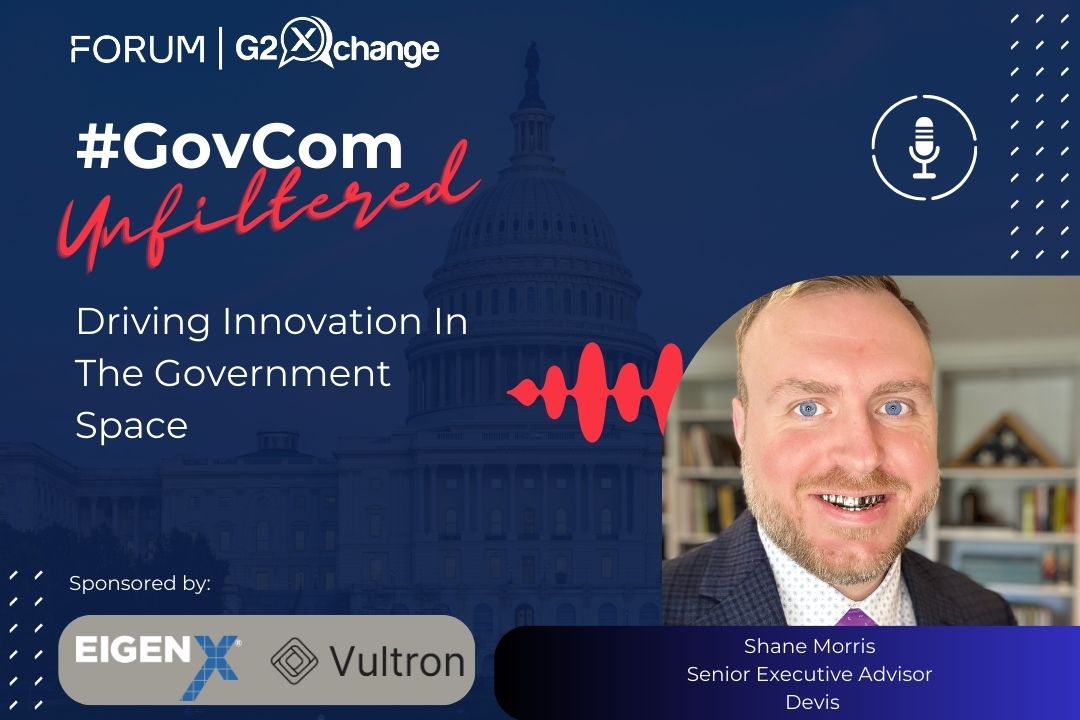This Q&A with Steven Lieberman, Acting Principal Deputy Under Secretary for Health, Veterans Health Administration, discusses the status of the Cerner Implementation, EHR Pilots, VHA’s activity in health IT, the MISSION Act and the future of Healthcare.
What is the Current Status of the Cerner Implementation?
The Department of Veterans Affairs is ensuring readiness of VA’s initial operating capability (IOC) sites in the Pacific Northwest, so we can achieve Go-Live on schedule. VA is continuing to work proactively with the Department of Defense to reduce potential risks during the electronic health record solution deployment by leveraging DoD’s lessons learned.
Additionally, VA planned eight national workshops to educate diverse clinical end-users and validate workflows to ensure VA’s new EHR solution meets the Department’s needs. During the events, VA collaborates with front-line clinicians across the Agency’s enterprise to validate workflows ensuring VA’s new EHR solution meets the Department’s needs. VA has completed five national Workshops. The remaining Workshops are scheduled to occur throughout the rest of this calendar year.
When does the VA expect the EHR Pilots to be deployed?
VA anticipates beginning Go-Live for its new EHR solution at IOC sites in the Pacific Northwest during the first/second quarter of calendar year 2020. VA is judiciously balancing speed of deployment with risks to cost, schedule, and performance objectives to ensure the quality health care of our Veterans. VA will assess its implementation strategies to optimize the EHR modernization schedule as it gains insight on processes through the IOC deployment.
Why is the portable Electronic Health Record important to the VA?
VA cannot deliver critical capabilities such as interoperability in a cost-effective way using its legacy EHR systems. To meaningfully share health data with medical providers from DoD, VA, and community partners, the Agency has made a commitment to modernize its legacy EHR systems. No Veteran should have to carry around their cumbersome printed records, endure repeated medical tests, or provide basic information to different providers. The new EHR solution will transform the way VA provides health care to our Nation’s Veterans by enabling seamless health care delivery and supporting Service Members as they transition from military service. Additionally, faster and smarter connections between military service and health outcomes will help identify Veterans at higher risk for issues like opioid addiction and suicide. Furthermore, VA’s new EHR will provide improved collaboration with other clinicians by incorporating mobility seamlessly within health care workflows.
What does VHA Have Underway in Health IT? What are You Trying to Achieve?
VHA aims to support a highly reliable, learning Healthcare system through better use of information. VA has three overarching goals for health IT (HIT): to provide an experience of seamless care for Veterans and clinicians wherever they are; to implement evidence-based, standardized clinical practice modules that smooth the enterprise transition to the Cerner solution and promote a consistently improving VHA-wide standard of care; and to deliver lower-cost, more scalable IT solutions that promote the forgoing.
Enhancing seamless care for Veterans and clinicians to provide the best care everywhere involves patient-focused solutions, improved information exchange with Healthcare partners, and improved standards. Patient-focused solutions include VA’s industry leading telehealth and patient-engagement programs. Through Veterans Health Exchange program, VHA exchanges quality-controlled data with over 135 healthcare organizations. As part of the MISSION Act, VHA is moving to an opt-out model that will increase information exchange with our partners 10-fold. VHA continues to be a leader in interoperability standards that promote seamless care at every level of the Healthcare technology stack from information representation that allow decision support to work reliably and through service-oriented architectures for data orchestration that allow Healthcare organizations and IT vendors to cooperatively support coordinated care.
The Veterans Health Administration is leading a number of initiatives in support of a highly reliable, learning Healthcare system. Using a multi-disciplinary approach, VHA is reengineering common clinical processes such as preventative screening, clinical consultations, medication titration, and using HIT to disseminate them throughout the enterprise. Tasks include process reengineering, process representation, knowledge representation, information representation, human-centered design of user-facing HIT, and machine-learning-based monitoring of performance measures for both quality and safety. Each clinical process will articulate with others in a business architecture framework.
VHA is working with OIT and other partners in VA to develop product lines for clinical HIT and data and analytics. VHA envisions that the clinical product line be focused on apps that interface with VA’s Computerized Patient Record System (CPRS)/VistA and Cerner solutions.
VA is working to modernize and enhance the Veteran’s digital experience. The Agency is enhancing and modernizing VA.gov, which has been transformed into a Veteran-focused site, providing an optimized on-line experience for Veterans to access and manage their VA benefits and health care. VA’s current patient portal, My HealtheVet, is fully integrated into VA.gov, supporting close to 5 million registered Veterans with nearly 2 million active users per month. For additional context, the primary feature sets within My HealtheVet include Health Records, Prescription Management, Appointments Management, and Secure Messaging. VA’s mobile app store (mobile.va.gov/appstore) supports many mobile health tools, designed to engage Veterans in their care between visits. VA’s new Health API should allow Veterans to interact with their own health data in new and interesting ways.
Telehealth Expansion is a key to improving accessibility to care and the Veteran’s experience. VA’s goal is for all Agency care team members who provide ambulatory care – including primary care, mental health, and specialty providers – to be capable of providing services into the home or to the Veteran’s preferred location by telephone, secure e-mail, or video by the end of FY 2021. VA has implemented over 20 clinical resource hubs to enhance and optimize care delivery across the enterprise, using telehealth to fill gaps and optimize quality of care. These clinical resource hubs support Primary Care, Mental Health, and several specialties including ICU care, Genomic Medicine, Dermatology, Stroke Care, and more.
The ATLAS (Advancing Telehealth through Local Access Stations) initiative brings community organizations together with VA health care teams in a partnership to offer Veterans a convenient and private space to connect through video telehealth. Current ATLAS partners include: Walmart, VFW, and The American Legion.
VA is also partnering with cellular providers to bridge the digital divide for Veterans. T-Mobile, Metro by T-Mobile, and Sprint currently offer Veterans use of VA Video Connect, VA’s video telehealth application for use in the home, without incurring data charges on their networks.
VA is already a world leader in the provision of care via telehealth. Last year, VA supported more than 2.2 million episodes of care via telehealth. One million of those episodes of care were video visits in over 50 specialty care areas.
Tell us More About the Mission Act and the VA’s Focus on the Veterans Caregivers Program
The MISSION (Maintaining Internal Systems and Strengthening Integrated Outside Networks) Act improves VA’s ability to provide high quality and timely care to Veterans who have nobly served our country. This legislation contains more than 50 sections intended to strengthen and improve VA’s ability to serve Veterans. Delivering an excellent experience of care for Veterans, families, and caregivers is at the core of VA’s approach to the MISSION Act. As we implement the MISSION Act, we are building the Agency into a Veteran-centered system that enhances the pride of Veterans and VA employees.
The MISSION Act has many components with the core being Veterans access to high quality community care, expanding eligibility for family members who care for veterans, and strengthen VA’s workforce and infrastructure.
To start, the MISSION Act will enhance the Veteran experience through an improved community care program that allows VA to partner with community providers to augment access to VA health care. It enhances the Agency’s use of state-of-art facilities and cutting-edge technology and enables Veterans to find the balance in the system that is right for them. VA’s approach to the MISSION Act gives Veterans an opportunity to make informed health care decisions in partnership with their care teams.
The MISSION Act also expands the eligibility for family members who care for Veterans, enabling them to receive compensation under the auspices of the Caregiver Support Program. Right now, that program is only available to eligible caregivers of Veterans who were injured on or after September 11, 2001.
Strengthening VA’s workforce is a key component of the MISSION Act, it enhances an education debt reduction program and improves flexibility for providing recruitment bonuses, allows for relocation opportunities and employee satisfaction avenues to ensure VA is able to retain the highest quality medical professionals. Additionally, the Agency will pilot a scholarship program for eligible Veterans to receive medical school training in return for serving in a VA hospital or clinic for four years.
Finally, the MISSION Act will help strengthen VA’s Infrastructure, with VA buildings averaging nearly 60 or more years old, the MISSION Act allows the Agency to assess the state of these buildings and help determine what is needed to modernize them.
What Does the Future of Healthcare Look Like for Our Nation and Our Nation’s Veterans and Why Should Veterans use VA?
The future of VHA healthcare puts Veterans at the center of their care. Thanks to the MISSION Act VA now has additional opportunities to enhance our high-quality Healthcare to our nations Veterans through, and improved community care process, a new urgent care option, helping Veterans access the right care at the right time. Offering a great service through a nationwide network of high-quality care, providing more Veteran-to-Veteran peer specialists, and expanding the program to support Veteran caregivers.
About Steven L. Lieberman
Steven L. Lieberman, MD, MBA, FACHE, FACP, was named Acting Principal Deputy Under Secretary for Health in the Department of Veterans Affairs on August 13, 2018. He leads clinical policies and programs for the Veterans Health Administration (VHA), the United States’ largest integrated health care system. VHA is also the Nation’s largest provider of graduate medical education and a major contributor to medical research.
Most recently, as ADUSH for Access to Care, Dr. Lieberman provided executive leadership, strategic direction, and oversight for the transformation of Veteran access to health care within VHA. He was responsible for operational policies regarding clinic management related to access, scheduling, consult management, and wait times.
Dr. Lieberman has over 25 years’ experience with VHA as a practicing board-certified physician in Pulmonary and Critical Care Medicine where leadership roles have included Associate Chief of Staff for Quality Management and Deputy Chief of Staff at VA Boston Health Care System and Chief of Staff at VA NJ Health Care System.
He earned his medical degree from Rutgers NJ Medical School in Newark, NJ, underwent a residency in Internal Medicine at Thomas Jefferson University Hospital in Philadelphia, PA, and completed his Fellowship in Pulmonary, Critical Care and Spinal Cord Injury Medicine at Harvard University Hospitals in Boston, MA. Dr. Lieberman also recently obtained an executive MBA from the Stern School of Business at New York University.












